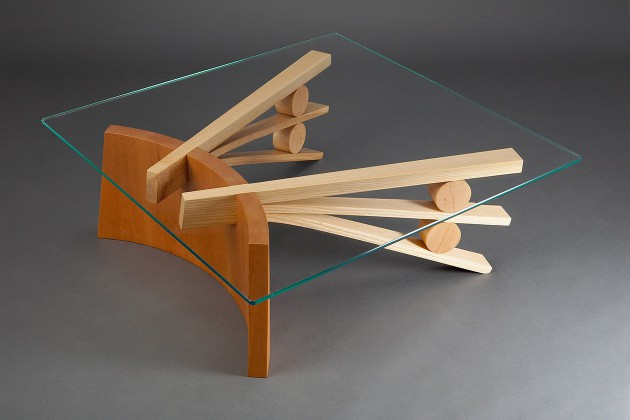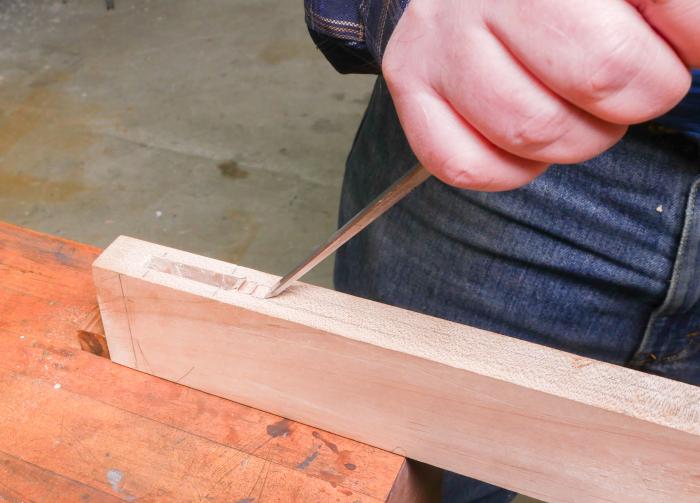Routers are power tools that are used when working with wood to cut sections from the timber. You can use this tool to decorate the edges or surfaces of a piece of wood, or you can cut a chase into the side of a piece of wood to hide electrical cables or pipes. And for routing table for routers, we have top rated router table reviews available.

Originally, routers were used for their decorative uses; however, they are now one of the most efficient and versatile woodworking machines. You can use a router to cut and shape wood, and you can create grooves, joins, and channels in wood.
The 'bandsaw box' approach: cut a thin slice off the bottom of the piece, then make a cut in from the side and around the opening you want to create. The small cut in the side can be glued closed, and the solid bottom can be glued back on, almost indetectably. Hello Gents, I have racked my mind on how to cut a square slot in the center of a 127mm x 127mm square piece of wood. I am trying to make some piggy banks for the holiday season and needed to cut this slot in the base so that the coins may be removed once the bank is reasonably full.
Knowing how to correctly use your router to cut a channel in wood is important to achieving a high-quality result. Read on to find out more about routers and how to use them to cut a channel in wood.
Types of Routers
The two router types that you can consider are a fixed model and a plunge model. There are also different power capabilities so you can select a model based on your needs. For light work, a 400 – 600W router will be sufficient.
For medium work, a 750 – 1200W router will work well. For heavy work, a 1200W and up router is ideal. Routers also come with varying speeds, which range between 800 and 30,000 revolutions per minute. Top rated wood routers reviews are also available. CNC routers are also considered best, cnc router reviews are available too.
Features of a Router
Routers have handles on either side of them so that you have proper control and grip on the machine while in use. To ensure that the router can travel easily over the timber you are routing, the base plate must be smooth. The flat side of the base plate should be run along a fence in order to keep the router straight.
Different routers have blades with different cutting depths. If you are using a plunge router, you should only take a little depth with each pass. If you take too much depth, you may burn out the motor over time. Rather, lock the blade’s depth so you maintain equal depth with each pass. There are many wood routers, but most wanted plunge routers are also available in the market. Check Triton TRA001 plunge router review as well.
Using a Router
The biggest concern when using a router is always safety. This is because a router cuts wood with an unguarded, spinning, high speed blade.
Secure the Wood
Ensure that the fence edge is straight and smooth. Any nicks or bumps along the fence edge will affect your channel. When using a fence to cut wood, you will often need to additionally support the wood as it is machined. This gives you a bigger base area for your router to move along, which prevents any tipping.
Choose the Feed Direction
How To Make A Coin Slot In Wood
When you rout the middle of the wood, there’s no wrong or right feed direction as the router surrounds the wood. However, it is advised that you always move in a left to right movement so that the fence is pulled down in place.
Select the Router Bit
The cutter’s bit diameter will determine the depth and width of the channel you cut. If you want a ½ inch channel, you need to use a ½ inch cutter diameter. If you want your channel to be wider than the bit diameter that you have, you will have to make a few passes.
Avoid Tear-Away

Tear-out can sometimes occur as you first touch the router to the wood and when you lift the router from the wood. To avoid this, place a piece of scrap wood at each end of the work wood so you can start and end with the scrap wood rather than your project.
Things to Remember When Using a Router
- Always move the router in a left to right motion so the fence stays pulled down in place.
- Never force your router through the wood you are working with.
- Check that you release the plunge lock after you are done.
- Ensure that your wood router is cleaned when you are finished.
Do not forget to ensure that your eyes and hands are protected before you begin working. Make sure that you have securely fastened the wood in place so that no accidents or injuries occur. Bear in mind that your router’s blades are very sharp so make sure that nothing of value is in the blade’s path. Keeping in mid these instructions, you can use all types of wood routers.
After a bit of practice, you can start undertaking more intense projects. However, remember that, just because routing a channel is a simple project, it should still be taken seriously and the correct process should be followed.
In woodworking a slot is a channel usually made to receive another piece. It is either designed to be a tight fit to hold something together like shelving or T&G flooring, or a sliding fit to permit things to move. A little research on vocabulary will tell us that a dado is a slot cut across the grain of the wood whereas a groove is a slot cut with the grain.
Wood on wood sliding fits often get sticky because of expansion and contraction. Never use soap to get a slot to slip better because soap attracts and absorbs moisture and will end up making matters worse. Paraffin or candle wax is the right lubricant because it will not soak into the wood but will lubricate.

How To Create A Slot In Wooden

How To Make A Deep Slot In Wood
If you want to actually adjust the width of a slot to make it slip more easily you can make minor adjustments by sanding the edge with a fingernail file -- a great shop accessory. This is good sandpaper on a rigid board. If you want to do it mechanically, there is no better tool than the FEIN MultiMaster Oscillating Tool, a tool that does not rotate but simply oscillates in a vibrating type of action and has many blade choices from Japanese style wood cutting, to metal cutting, to polishing, sanding and grinding tools. For this task I would use the rigid carbide coated grinding blade for a square edge and total control. Yes I sell this tool and all of its blades in my store simply because it is difficult to find in stores and it has become one of my primary working tools.
How To Create A Slot In Wood Joinery
People often ask me what is the best way to make slots in the first place as so many tools can accomplish this task. I prepared a comparative chart to see the differences in the primary speciality tools for making slots. The router with a good straight guide will make the most accurate and square slots. The traditional Chipper & Cutter stacked blade combination is a close second, except that its outer blades make a slight indentation in the bottom of the cut to prevent splintering. The convenient wobble washer will make a square cut at one width and at all other sizes it will create a curved bottom. Both of these saw blades make good quick utilitarian cuts for rough work but neither are really good enough for furniture grade joints where the bottom of the cut will be visible on the edge of the wood. Only a massive fixed dimension dado blade will make a cut equivalent to the router, but it is only really designed for making grooves, slots that go with the grain of the wood.
How To Create A Slot In Wood Lathe
You can make slots with repeated passes of a table or radial arm saw and clean them up with a chisel, or for a job a good as the router, you can cut the exact width and rough out the depth with a saw blade and finish off with the original hand router. Yes, they still make hand routers, that strange bottom smoothing hand plane you see with the hooked blade that drops down to a controlled depth.